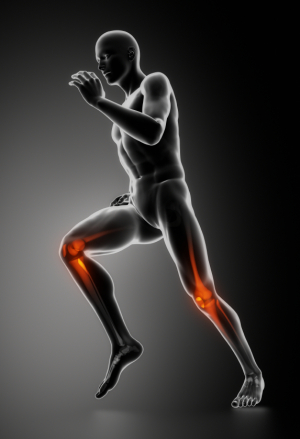 Whether an athlete be a pro or amateur, running and triathlon success truly does take a village! With injuries, strength & conditioning, nutrition and even sports psychology to look after, even I sometimes refer clients to specialists, especially if I am really close to an individual and playing a key role in their performance. However, with sports injuries I think the best therapy is injury prevention in the first place.
Whether an athlete be a pro or amateur, running and triathlon success truly does take a village! With injuries, strength & conditioning, nutrition and even sports psychology to look after, even I sometimes refer clients to specialists, especially if I am really close to an individual and playing a key role in their performance. However, with sports injuries I think the best therapy is injury prevention in the first place.
To prevent running injuries, I recommend the following:
Excellent Nutrition & Hydration
With nutrition and hydration, I don’t mean excess – just high integrity. I like to focus on anti-inflammatory foods that neutralize the acids in the endurance athlete’s body. I’ve observed a connection between the Omega 3 & 6 oils like fish and flaxseed oil, to effective muscle function & recovery
Active Stretching
Active stretching of key muscle groups, especially pecs (chest), hip flexors, quads (especially rectus femoris) & soleus (deep lower calf, i.e. bent knee). The “activity” should be felt in the belly of the muscle and NOT at the origin or insertion, i.e. at the ends where it attaches.
Self-Massage
We all have “problem areas” for which we cannot run for a massage every other day, or go to a therapist normally. I have learned at training camps that the best PT/massage therapists quickly teach the athletes how to self-massage, and even have them doing this while they wait for treatment. Just a few minutes two to five times per week with some lotion working out your calves, hamstrings, back, pecs, and especially quads above and around your knees works absolute wonders, and really speeds up recovery as well as restores tissue tension. Do this so that you don’t go off the next day on an easy run with your cables all out of tension and get injured because, although you were centrally recovered (resting heart rate, etc.), your legs couldn’t handle your cardiovascular output capabilities. Things like Trigger Point TP massage balls (these guys do a really nice job with their tools and athlete education), dense foam rollers & massage sticks like cake rollers all help in this regard. (The Stick works great – I own two of them!) A new product called Roll Recovery, made by fast runners Adriana and Jeremy Nelson, has also greatly impressed me lately – it provides “world class” specific pressure. Fellow Boulderite Rich Poley has a great book called “Self-Massage for Athletes” as well.
Regular Massage
Regular massage focusing on individual key areas as indicated above and focusing on back and feet also (for regular runners upper back needs good work). The best therapists are the ones that know you or your body well and have worked with you when fit, injured, healthy, unfit, during heavy training and pre-races. Mark Plaatjes’ wife Shirley is universally renowned for her skill in this department in Boulder, CO. Good luck getting an appointment! She has rooms in Mark’s offices at In Motion Rehabilitation, which is just above The Boulder Running Company running store (#1 in the nation) on Pearl Street in Boulder.
Regular Tune-Ups
Regular tune-ups with a PT, or PT-minded chiro or similarly skilled individual who knows your body well (over time).
Acupuncture
Acupuncture (or dry needling) is an incredibly effective and accurate healing and maintenance modality in my mind. The mastermind and author of the bible on sport acupuncture, Yun-tao Ma (Biomedical Acupuncture for Sports & Trauma Rehabilitation) works on my athletes here in Boulder and teaches the skill all over the world Effective warm up procedures, whether that be progressing from walk to slow run to regular easy or endurance run training, or preparing for a quality workout. In this modern era where individuals are often rushed, many a repetition is wasted when loaded onto a system not ready to receive that training. When this happens, the body responds to the rep catabolically – it leads to breakdown and unmanageable fatigue, either acute or chronic. I recommend better warm ups both centrally and peripherally, and then less work if time is limited.
Correct Loading
It’s most often not a single workout that is our problem, but how we stack these workouts together. As we age we can often handle the same microcycle, i.e. a single session or a single day’s worth of training, but where in the past a single day off or easy day sufficed for recovery, we now need 2 days or more. When designing our training we should consider other periods for our mesocycles, rather than just a week. Examples may be having a 2-week cycle; perhaps one long run every 2 weeks, perhaps 3 days off between quality workouts instead of 2, perhaps 2 days off in a cycle instead of one, etc.
Remember that running represents the hardest of the muscle activities because it involves eccentric contraction, i.e. the muscle lengthens while contracted – its toughest job. It takes longest to recover from this, which is why swimming & cycling have little to no micro-damage after hard sessions, as they are primarily concentric (shortening) muscle activities. Take care of your body with the preventive measures listed here, so that you can do the most important thing of all – keep running.


